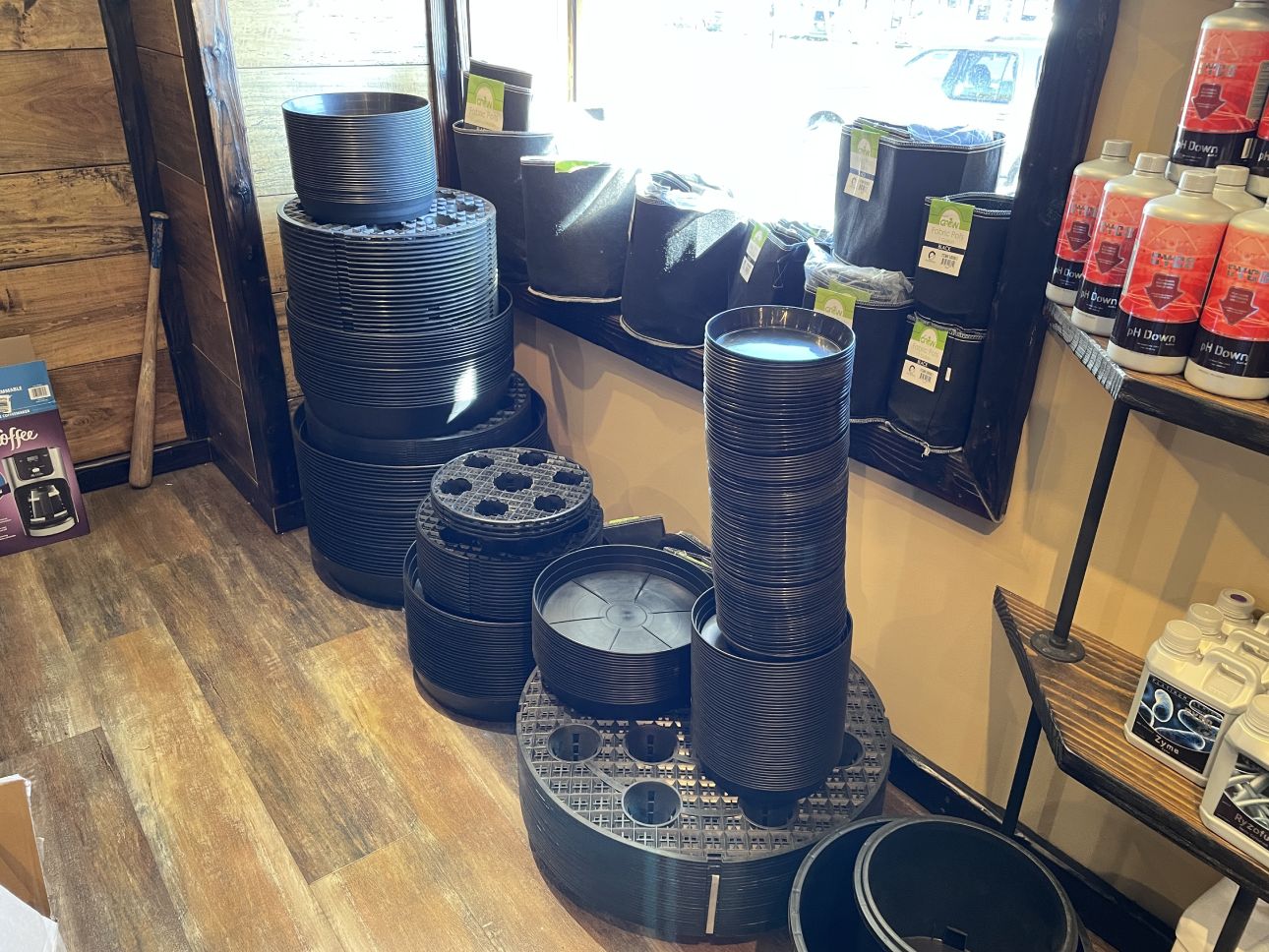Unlocking the Prospective of Hydroponics: Recognizing Its Uses and Various Kinds
Hydroponics, a method of cultivating plants without dirt, has actually amassed raising focus for its possible to change farming and cultivation techniques. As we browse with the elaborate landscape of hydroponic systems and methods, it ends up being apparent that each approach holds distinct benefits and constraints.
Advantages of Hydroponic Equipments

An additional advantage of hydroponic systems is the capacity to grow plants in a smaller room. Hydroponic systems minimize the risk of soil-borne diseases and parasites, as there is no soil to harbor these dangers.
Typical Utilizes in Farming

Provided the effective water preservation and space-saving advantages of hydroponic systems, it appears that these cutting-edge farming approaches have actually located usual usages in numerous fields of farming. In standard agriculture, soil-based farming can be land-consuming and labor-intensive. Hydroponics supplies a service by allowing crops to be expanded without dirt, minimizing water usage by up to 90% compared to standard farming approaches. This makes hydroponics particularly ideal for areas facing water scarcity or limited cultivatable land. In addition, the regulated atmosphere of hydroponic systems allows year-round growing, offering a consistent supply of fresh produce despite outside weather problems.
Hydroponics is frequently made use of for expanding a range of plants, consisting of leafy greens, tomatoes, cucumbers, strawberries, peppers, and natural herbs. In addition, hydroponic systems are made use of in research and educational settings to research plant growing, growth, and nutrition techniques.
Exploring Different Hydroponic Techniques
What are the various innovative techniques made use of in hydroponics to boost plant growing effectiveness and generate? Hydroponic systems use an array of approaches that satisfy different plant types and cultivation objectives. One preferred strategy is the Deep Water Society (DWC) system, where plant roots are submerged in a nutrient service, giving adequate oxygen and nutrients. One more widely used approach is the Nutrient Movie Method (NFT), which includes a shallow stream of nutrient solution streaming over the plant roots, promoting water and nutrient uptake. In addition, the Ups and downs system, likewise understood as the Flood and Drain system, periodically floodings the plant roots with nutrient option, permitting oxygenation during draining durations. Aeroponics is one more advanced strategy that involves misting plant roots with a nutrient solution, making best use of oxygen absorption and nutrient uptake. Each of these strategies showcases the flexibility and efficiency of hydroponic systems in boosting crop development and yield.
Contrasting Various Hydroponic Solutions
Discovering the efficiency and return improvement techniques in hydroponics leads us to contrast numerous hydroponic systems available for plant farming. Each hydroponic system has its distinct functions, benefits, and limitations, making it critical for growers to choose one of the most suitable system based on their particular needs and restrictions.
One of the most typical hydroponic systems is the nutrient movie method (NFT), where a slim movie of nutrient solution continually moves over the plant origins. In comparison, the deep water society (DWC) system submerges plant roots straight right into the nutrient service, offering sufficient oxygen and nutrients.
One more popular hydroponic system is the ebb and circulation (or flood and drainpipe) system, which regularly floodings the plant origins with nutrient service prior to draining it. By comprehending the differences in between these hydroponic systems, growers can make enlightened decisions to maximize crop yield and quality.
Technologies in Hydroponic Innovation
With advancements in hydroponic innovation, the agricultural market is witnessing a change towards a lot more lasting and effective farming Learn More techniques. Technologies in hydroponic innovation are changing the way plants are expanded by taking full advantage of returns, conserving sources, and lowering environmental influence. One essential innovation is the advancement of smart hydroponic systems that use sensing units and automation to keep track of and readjust environmental conditions such as pH degrees, nutrient concentrations, and light direct exposure in real-time. These systems enable exact control over growing conditions, resulting in optimum plant development site here and higher crop yields.
One more significant innovation is the assimilation of upright farming strategies with hydroponic systems, allowing for the growing of plants in piled layers. This upright approach optimizes area use, making it optimal for metropolitan settings where land schedule is limited - The Indoor Earthworm. Additionally, using advanced LED lighting systems customized to details plant needs has actually boosted power performance and boosted development prices in hydroponic arrangements
Technologies like these are driving the advancement of hydroponics, making it a lasting and extremely appealing alternative for contemporary agriculture.
Final Thought
Finally, hydroponics offers countless benefits in agriculture and has different techniques and systems that can be made use of to maximize its capacity. Developments in hydroponic modern technology continue to improve effectiveness and sustainability in food production. By recognizing the uses and various kinds of hydroponic systems, cultivators and farmers can open the full possibility of this innovative approach of growing plants without dirt.
Additionally, hydroponic systems enable for better control over nutrient degrees, pH equilibrium, and environmental problems, leading to healthier plants and higher returns.

Comments on “Discover the Ultimate Growing Strategy: The Indoor Earthworm Approach”